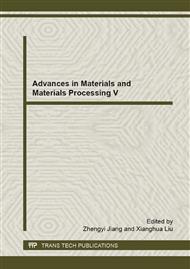p.746
p.751
p.756
p.762
p.766
p.770
p.773
p.777
p.781
Kinetics Analysis on Process of Direct Smelting and Alloying between High-Carbon Ferrochrome and Molybdenum Oxide
Abstract:
Based on the direct reduction alloying theory, the kinetics investigations on process of direct smelting and alloying between high-carbon ferrochrome and molybdenum were conducted. The results indicate that at the high temperature MoO3(g) can easily reduced by carbon dissolved in iron liquid. Reducing the volatilization loss of MoO3 is the most effective measure to increase the Mo yield. With regard to the reaction between CaMoO4(l) and dissolved carbon at steelmaking temperature, the increases of mass transfer coefficient of CaMoO4 in slag and phase contact area between metal and slag make for increasing the reduction rate. CO gas generated from extra carbon acting as reducing agent can provide favorable kinetics conditions for reduction reaction. The reaction between Cr7C3(l) and MoO3(l) in liquid steel is similar to the reaction between CaMoO4(l) and dissolved carbon. The incensement of mass transfer coefficient of MoO3(l) in slag can improve the reduction rate effectively. The CO gas generated from reaction can stir molten bath promote foam slag formation, so as to increase the phase contact area, which provides favorable kinetics condition.
Info:
Periodical:
Pages:
766-769
Citation:
Online since:
March 2015
Authors:
Price:
Сopyright:
© 2015 Trans Tech Publications Ltd. All Rights Reserved
Share:
Citation:


